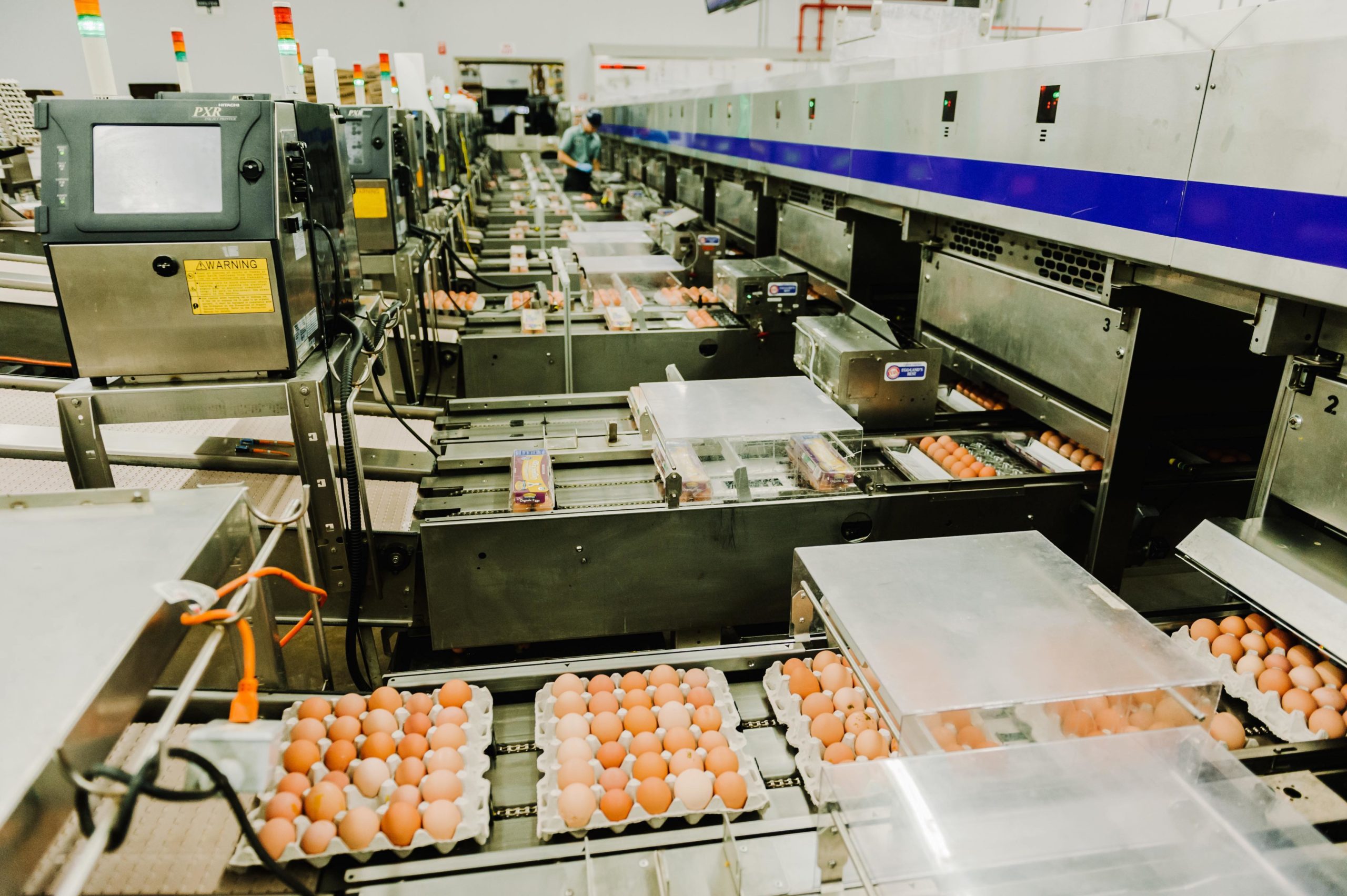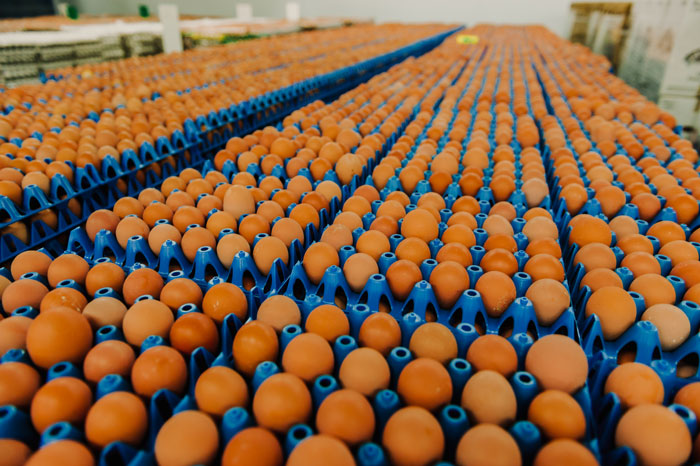Everyone needs a house to feel safe. But hens need extra protection from hawks, foxes and diseases that humans can carry. Some of our houses have a front porch with access to the outside, and some are completely enclosed. Enclosures are also good for controlling foreign bacteria and diseases.
As long as we have the space we need to strut, flap and socialize, we’re good. The best houses have space for us to fly and dirt floors for us to scratch on and give ourselves a good dust bathing.
The better we eat, the better our eggs. That’s why good hens eat responsibly-sourced feed. To lay organic eggs, we eat organic feed. To lay nutrient-enhanced eggs, our feed is altered slightly so we lay eggs that are richer in vitamins, minerals and Omega-3’s.
Speaking of, we hens love having a special place to lay our eggs. Some facilities offer an area that’s shielded by rubber curtains to give the hens more privacy with a slightly darker and quieter area.
From the nesting area, eggs can be collected by hand. Or they can get a little help from gravity and roll onto a slow-moving conveyor belt. The conveyor belt gently takes the eggs to the processing facility to be washed.


Once eggs are separated by size, they’re sent to the packaging facility to be placed into a carton. Each carton is then given a date and a packing facility identifier. The cartons are then grouped in a box and shipped off to their final destination, your grocery store or your favorite restaurant!

That concludes the tour of a well-run egg operation. I hope you enjoyed your time with me, but I especially hope you continue to enjoy those eggs! To see the different types of eggs you can buy and where each specifically comes from, head here.